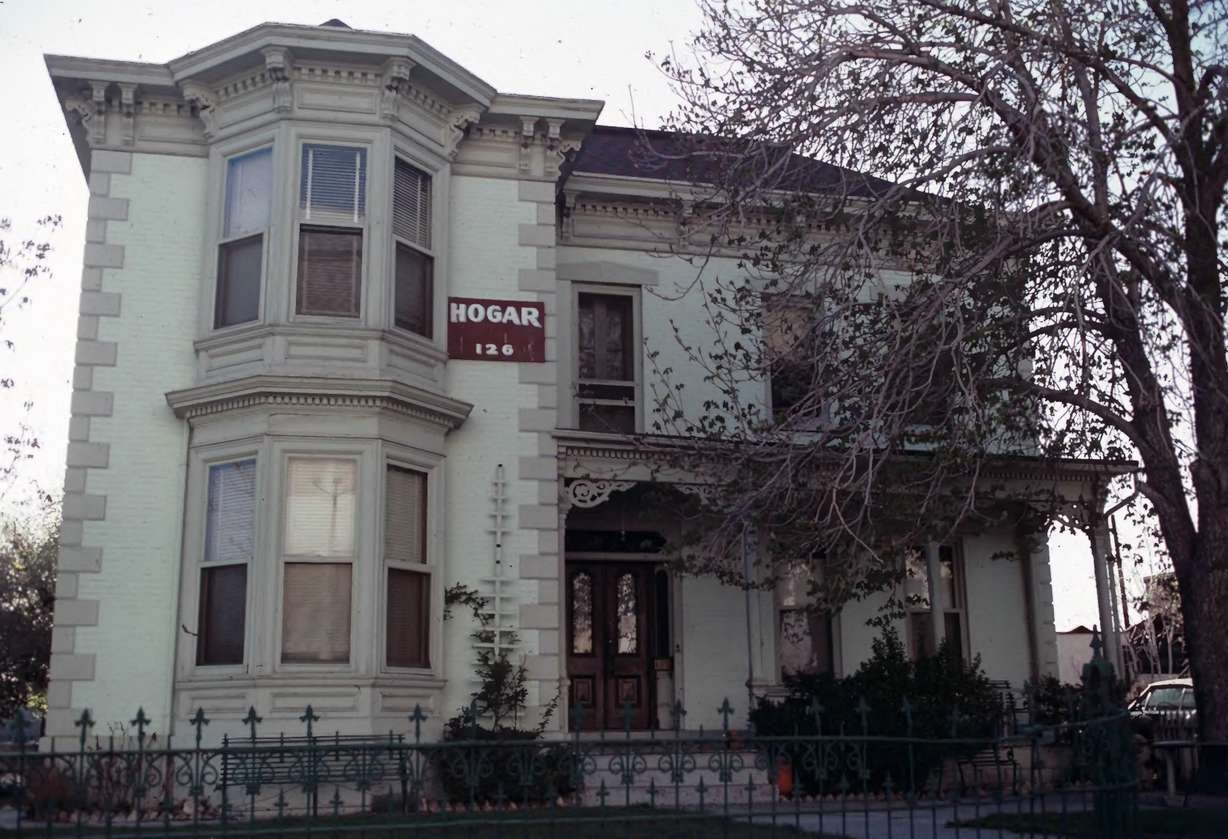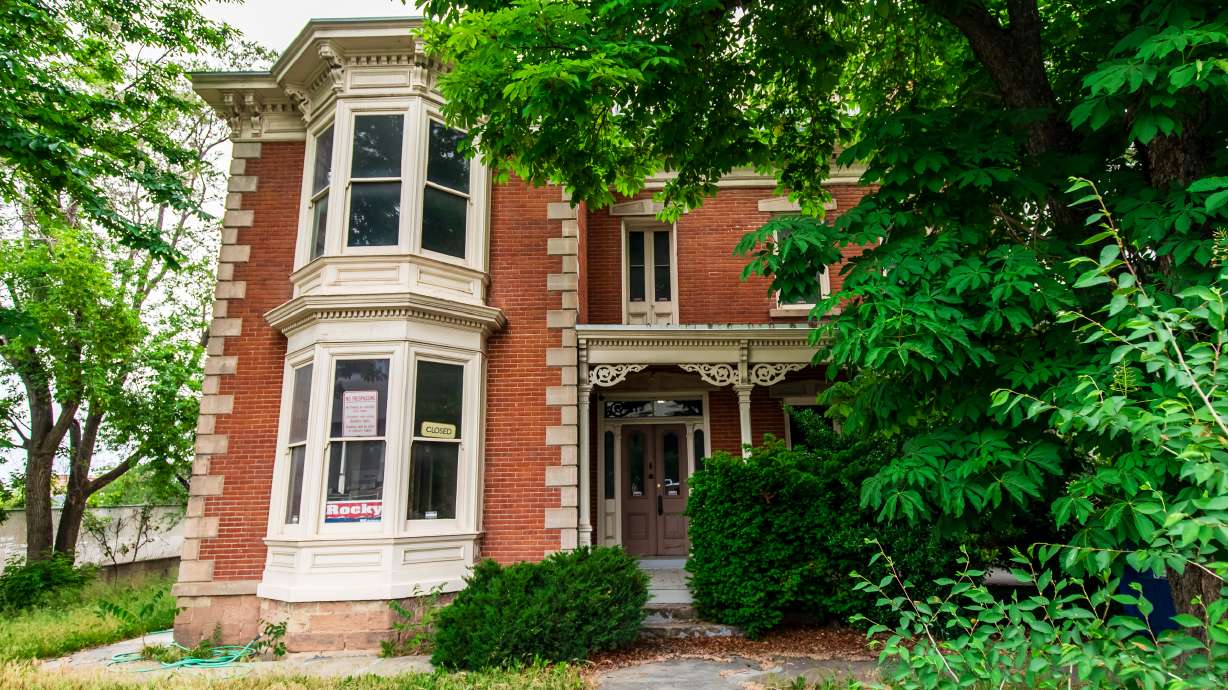Estimated read time: 5-6 minutes
- Preservation Utah's 2025 Most Endangered list highlights historical sites at risk in Utah.
- Many sites face potential demolition amid new development or redevelopment.
- Efforts aim to protect these sites, including historic buildings and petroglyphs, from disappearing.
SALT LAKE CITY — First home to a wealthy pioneer, the Hogar Hotel would eventually become a boarding house, restaurant and informal cultural center in the heart of Salt Lake City.
The 148-year-old building stands shrouded by trees and bushes, tucked behind a large sign indicating that it is under contract by a new owner. It stands adjacent to an empty lot that was recently cleared out to make way for future development, potentially foreshadowing its future.
That's why it's one of a dozen new additions to Preservation Utah's "Most Endangered" list. The list, debuted by the state history nonprofit last year, highlights historic buildings and other sites now facing the potential of being demolished or destroyed. It seeks to protect them as development and redevelopment creep into some of the last remaining pieces of their era.
The organization decided to make it an annual report released each May, as part of National Preservation Month. It was compiled after reviewing submissions from across the state, said Brandy Strand, executive director of Preservation Utah.
"Our most endangered list has really grown, because these are all submitted by community members who live and breathe near these historical spaces, and they are concerned about losing treasures from Utah," she told KSL.com.
Preservation Utah's 2025 Most Endangered Historic Sites
- A.N. Tanner House in Grouse Creek, Box Elder County
- Chateau Normandie/Moyle Apartments in Salt Lake City
- Huntsman Center in Salt Lake City
- Kamas Main Street Corridor in Kamas
- Ogden Union Stockyard Exchange Building in Ogden
- Phillips Congregation Church in Salt Lake City
- Salina Municipal Building and Library in Salina, Sevier County
- The Benson Gristmill in Stansbury Park
- The Hogar Hotel in Salt Lake City
- The Old Mill in Cottonwood Heights
- The Vallis Hotel in Morgan
- Washington County Petroglyphs in Hurricane, Ivins, St. George and Washington, Washington County
Caught in the middle of downtown plans
A quarter of this year's sites can be found in Salt Lake City, including the Hogar Hotel.
Built in 1877, it first served as the residence for Lewis S. Hills, a wealthy banker who arrived in Utah in 1862, according to a history of the building compiled by state historians in 1977. It eventually ended up in the hands of a Spanish immigrant named John Landa in 1928, who converted it into a hotel that he and his wife ran for decades, particularly serving members of the Basque Country who also found their way to Utah.

The hotel eventually closed in the 1970s, and the building became an antiques shop. It landed on the National Register of Historic Places in 1977.
The building made this year's endangered list because of where it's situated. It's one of several remaining buildings located on Block 67, which was recently added to the downtown redevelopment district surrounding the Delta Center. Its new owner told the nonprofit that he'd like to relocate the building instead of tearing it down, which gives Strand hope.
However, the organization says it's still at "serious risk of demolition or being lost" should the rapid speed of downtown development force the owner to tear it down before finding a new spot to relocate the building.
It's unclear if the listing will help save the Hogar Hotel, but Preservation Utah included historic Japantown and Abravanel Hall in its inaugural list, and both became rallying cries as the "sports, entertainment, culture and convention district" took shape.
The concert hall ended up on the National Register of Historic Places, while county leaders also vowed to preserve it by the end of 2024. City leaders have also sided with preserving and revitalizing what's left of Japantown, which is included in district plans.
Preservationists are hoping this year's list can create the same type of support for the Hogar Hotel.
"We believe there are many ways you could integrate this important historical space into the development, so we're trying to bring more awareness to this incredible building," Strand said.
Other buildings in peril
The Jon M. Huntsman Center also landed on this year's list, following the University of Utah's announcement earlier this year that it's exploring the possibility of demolishing the 56-year-old arena and building a new arena elsewhere on campus.
The 120-year-old Phillips Congregation Church near Trolley Square is on this list, too, as the city is still reviewing a demolition permit its current owner filed late last year as it explores future options for the site.

Another city building made its way on the list because of neglect. Chateau Normandie, previously known as Moyle Apartments, has been vacant for years and went up for sale last year. However, the 94-year-old apartment complex was noticeably damaged by a pair of fires on Halloween and the morning after, not long after it went on the market.
Since then, it's attracted graffiti and vandalism. Strand says she believes the apartments can be saved and converted into affordable housing, but the organization notes that would also require "substantial investment" given the property's state.
Similar threats plague other places on this year's list. The Vallis Hotel in Morgan and the old Cottonwood Paper Mill near the mouth of Big Cottonwood Canyon, built in 1890 and 1880, respectively, could be demolished for new development. The Ogden Union Stockyard Exchange Building is also at risk of being lost following years of vacancy.

New development has threatened more than just buildings, though. Washington County petroglyphs were added to the list following requests from people in Hurricane, Ivins, St. George and Washington.
"As these developments are being built out, they're finding ancient pieces of our history," Strand said.
Preservation Utah is hoping the petroglyphs' listing can lead to new city ordinances that add protective features to preserve the pieces of Indigenous history, which date back somewhere between 1,000 and 13,000 years ago, as cities grow in the county. Their call comes as many other petroglyphs are facing threats on public lands.
The latter sparked new efforts to educate outdoor recreationists about the importance of not damaging the ancient rock art.
"The bottom line is that this is disrespectful to the tribal people of Utah," said Autumn Gillard, the cultural resource manager for the Paiute Indian Tribe of Utah, in December.









